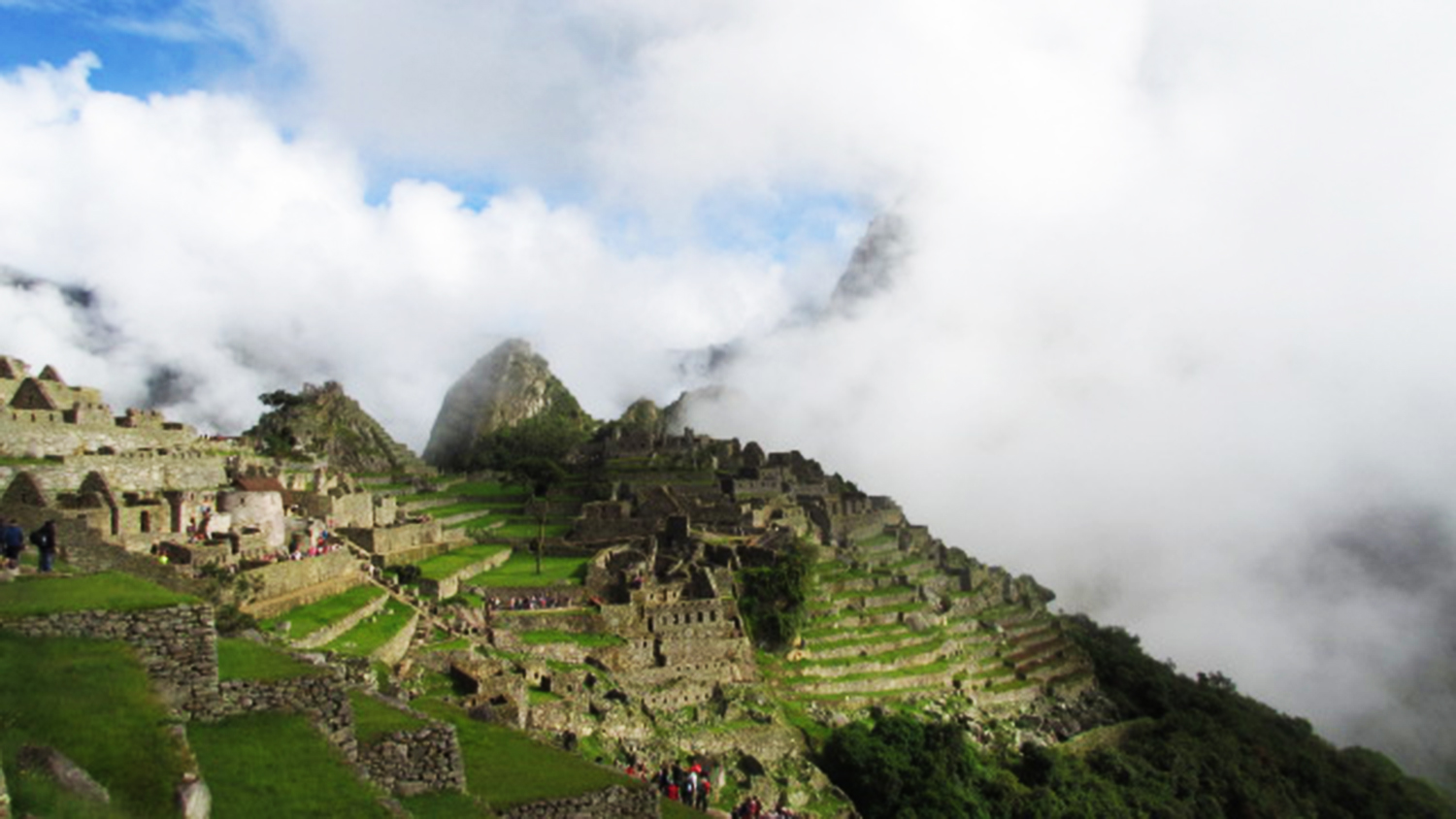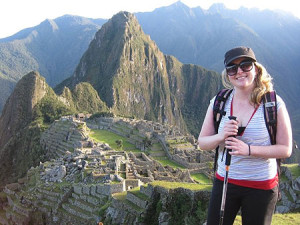
Inca Trail
The Inca Trail to Machu Picchu is an amazing experience.
It is 45kms long and takes four days, with only a few hours of hiking on Day 4.
The Inca Trail to Machu Picchu is generally rated as moderate and thus can be completed by a person of average fitness. The Inca Trail takes you through a variety of beautiful Andean scenery combining various Inca ruins with mountainous landscapes, sub-tropical jungle, the cloud forest, and a large variety of orchids. The grand finale of the Inca Trail is seeing Machu Picchu from the Sun Gate at dawn on Day 4, and hiking down to take photos and explore the famous site before the trains arrive with tourists for the day.
Possibly the greatest challenge that differentiates the Inca Trail from others is the altitude. The highest point of the Inca Trail reaches 4200 metres above sea level on Day 2, and the altitude can have effects including headaches, dizziness, fatigue, pins and needles, and, most commonly, shortness of breath upon exertion. It is advisable to spend at least two days in Cusco at 3400 metres acclimatising to the altitude, and also to obtain altitude sickness tablets from a doctor before arriving in Peru. This causes most people the need to hike the Inca Trail at a significantly slower speed than they would at sea level, and also to require rest more frequently.
The best time to walk the Inca Trail is from May to September because there is less chance of rain, however temperatures can reach below zero from June to August , so thermal underwear and a warm sleeping bag are essential on the Inca Trail. A walking stick is recommended as the Incas constructed steep stone stairs to help them move through the mountainous terrain.
The Peruvian Government has recently implemented a number of new laws that affect the hiking of the Inca Trail, most notably that a permit is required to hike the trail, as only 500 people are allowed on it at a time, including porters and guides. Generally your tour group or guide will organise this for you.
The use of local porters while walking the Inca Trail to Machu Picchu is advisable, as it supports the local economy and makes the trip more enjoyable. Due to the regulation that porters can only carry 25kg each, they will generally only carry 6kg of equipment per hiker, however this should sufficiently cover the main gear. Don`t forget to take some extra money to tip the porters at the end of the Inca Trail walk.
Day 1 leaves from kilometre 82, a short bus ride from Ollyantaytambo, and is the easiest of the days, giving a bit of a false sense of security.
Day 2 involves climbing the steep path to Warmiwanusca, or Dead Woman`s Path. This pass is the highest point of the Inca Trail at 4198m (13769 ft) above sea level, and this day is often labelled the most challenging.
Day 3 is the longest, with more passes to be crossed (There are 3 in total on the Inca Trail). The final night of camping is at Winay Wayna archaeological site on a hillside with panoramic views of the valley below. The final morning involves climbing the stairs to the Sun Gate overlooking Machu Picchu, where you can catch your first glimpse of the ruins as the mist rises off the mountains at dawn.
Walking the Inca Trail to Machu Picchu is an amazing walk and the scenery is breath taking and the Inca Trail is highly recommended!
